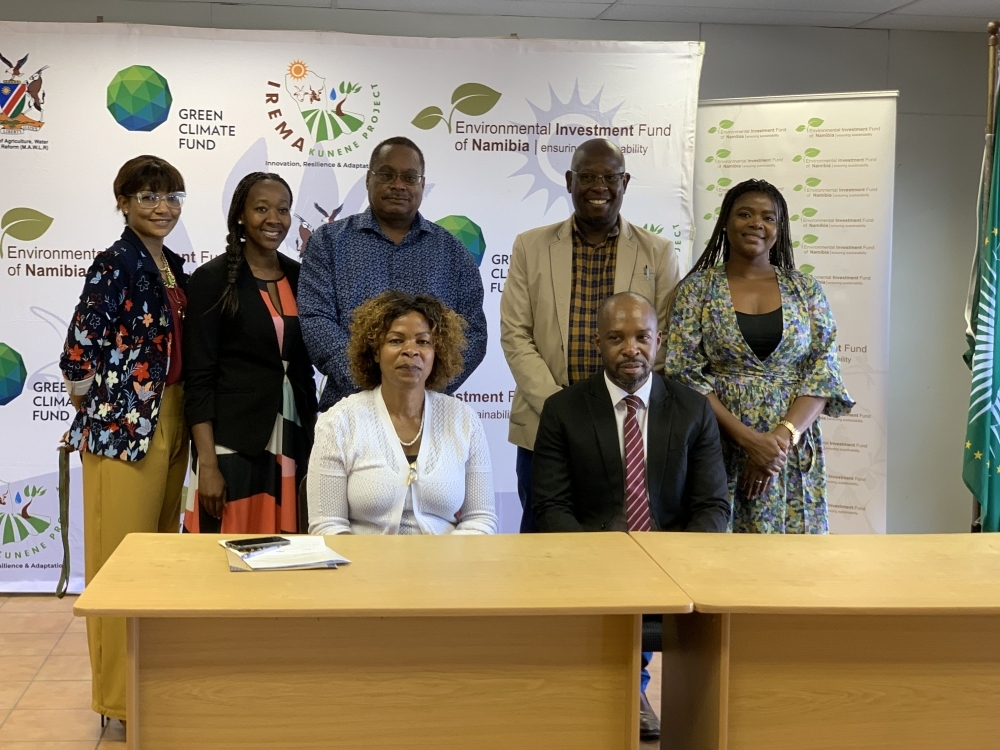Early Warning System for Kunene
The Environmental Investment Fund (EIF) through the Improving Rangeland and Ecosystem Management (IREMA) project, which is implemented in conjunction with the Ministry of Agriculture, Water and Land Reform, is busy rounding off the consultancy work that developed an Early Warning System (EWS) tailored for the Kunene region to the tune of N$950 000.Along with this, was the signing of a Memorandum of Understanding between the Namibia Meteorological Services under the Ministry of Works and Transport (MWT).
The Kunene region is one of the most vulnerable regions in the country, being severely affected by climate-related shocks, such as recurrent droughts. Over the past decade, small-scale farmers in the region have endured droughts and floods that have culminated in the loss of their primary form of livelihood.
Sadly, their livelihoods are vulnerable to climate change and Namibia continues to observe the ongoing natural variability and changes in rainfall patterns, hence the dominant extreme weather conditions in recent years.
It is in a bid to mitigate these systemic risks, that the EWS is being developed. It is an adaptive measure for climate change using integrated communication systems to help communities prepare for hazardous climate-related events, is extremely important.
A successful EWS saves lives and jobs, ecosystem and infrastructure, and supports long-term sustainability.
In fact, early warning systems can also assist in planning, saving money in the long run and protect economies.
Further, through the EIF’s partnership with the MTC, four Automated Weather Stations have ben procured at the cost of N$800 000. These will be installed at the project’s anchor project areas such as Warmquelle, Fransfoentein, Kamajab and Berseg in the Kunene region.
Communication is key
A well-functioning EWS is an adaptive measure for climate change, which uses integrated communication systems to help vulnerable communities prepare for hazardous climate-related shocks.
Such a system comes with wide-ranging benefits such as saving lives and livelihoods, safeguarding productive land and infrastructures, and supports long-term sustainability. This conforms to the mission of the EIF, which aims to promote sustainable economic development of Namibia through investment in and promotion of activities and projects that protect and maintain the natural and environmental resources of the country.
The EWS will alert communities under threat of an imminent disaster to undertake proactive actions built upon the four EWS components: (i) hazard detection, monitoring and forecasting; (ii) analysing risks and incorporation of risk information in emergency planning and warnings; (iii) disseminating timely and “authoritative” warnings; and (iv) community planning and preparedness.
This will address adaptation needs of smallholder farmers through access to accurate and up-to-date climate information to enhance adaptation responses. This intervention would go a long way in minimising current steps or procedures undertaken before early warning messages reach the intended populations at risk.
The development of an EWS tailored for the Kunene region will not only assist communities and public institutions in their planning but will also help preserve essential financial resources in the long run, thereby protecting the local and national economy.



